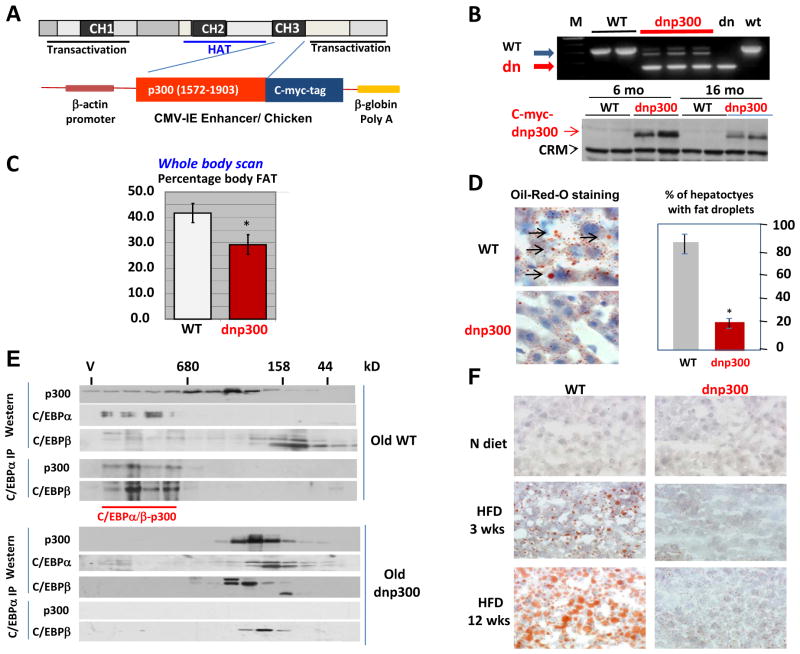Figure 5.
Transgenic mice expressing dominant-negative p300 (dnp300) do not develop hepatic steatosis with age and under HFD conditions. A. Generation of transgenic animals expressing dnp300. Scheme showing the localization of the CH3 domain used in the generation of the transgenic animals. B. PCR genotyping gel indicating three animals display genomic insertion of the transgene. Dn and wt; PCR from control plasmids containing dominant-negative and WT cDNAs. Western blotting (bottom image) shows expression of c-myc–dnp300 in livers of transgenic animals. CRM; cross reactive molecule. C. The total fat is reduced in transgenic mice. A whole-body scan was performed on WT and dnp300 mice. Bar graphs represent an average of 5 animals of each genotype. D. Numbers of fat droplets are reduced in livers from dnp300 mice (20 months of age) as compared with the numbers WT animals (20 months of age). Hepatocytes from WT or dnp300 mice were stained with Oil Red O. The number of hepatocytes with fat droplets was calculated in livers of WT and dnp300 mice. The bar graph picture shows a summary of three repeats with five animals of each genotype. E. dnp300 disrupts C/EBPα/β-p300 complexes in livers of old mice. Protein extracts from livers of 20-month-old WT and dnp300 mice were separated on the SEC400 column. Fractions were analyzed as described in the legend to Fig. 2D. F. dnp300 mice do not develop hepatic steatosis within 12 weeks of HFD protocol.

